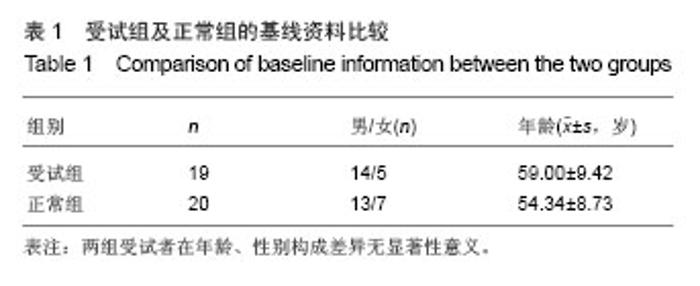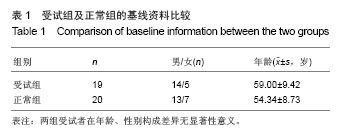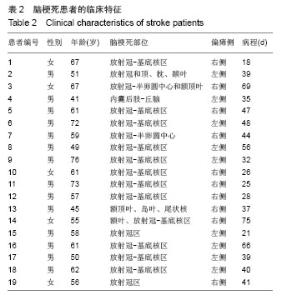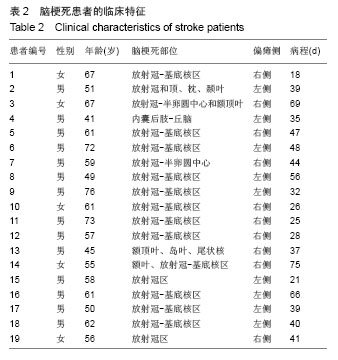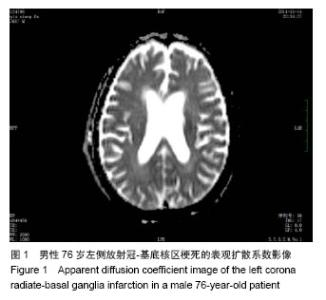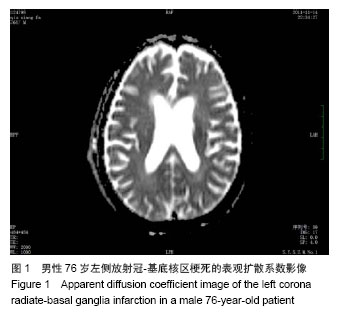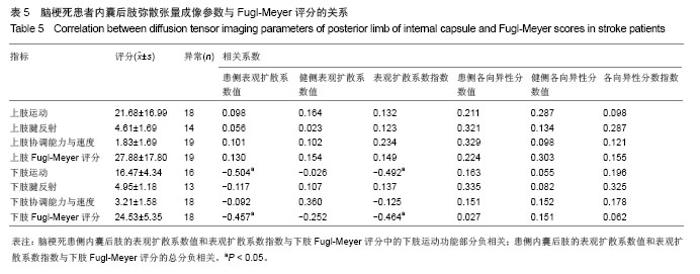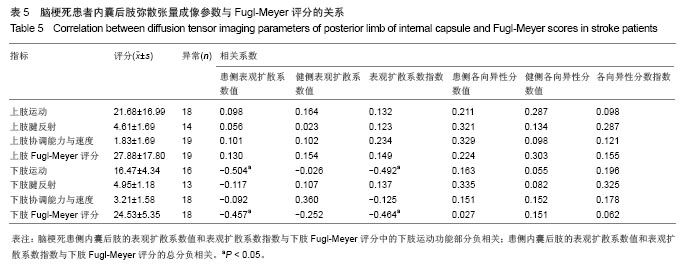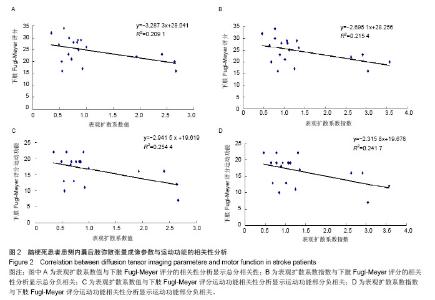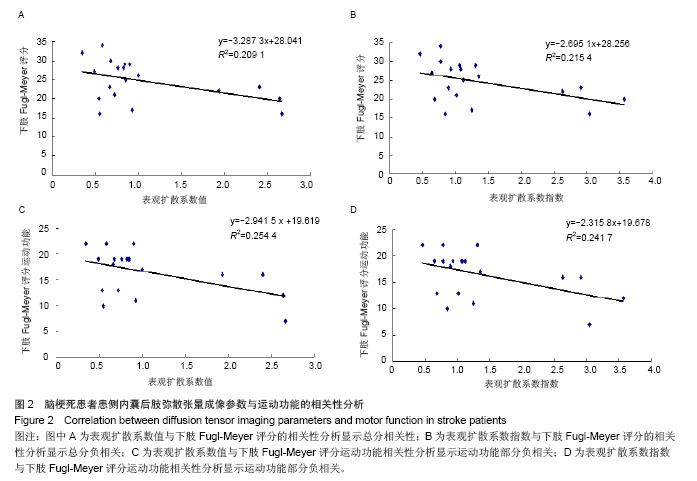Chinese Journal of Tissue Engineering Research ›› 2014, Vol. 18 ›› Issue (15): 2421-2426.doi: 10.3969/j.issn.2095-4344.2014.15.021
Previous Articles Next Articles
Xiao Xiang 1, 2, Li Le1, Lv Yan-chun3, Lin Qiang1, Huang Dong-feng1
- 1 Department of Rehabilitation Medicine, First Affiliated Hospital, Sun Yat-sen University, Guangzhou 510080, Guangdong Province, China;
2 Department of Rehabilitation Medicine, the Fifth People’s Hospital of Shenzhen (Shenzhen Luohu People’s Hospital), Shenzhen 518001, Guangdong Province, China; 3 Department of Imaging & Interventional Radiology, Cancer Center, Sun Yat-sen University, Guangzhou 510060, Guangdong Province, China
-
Online:2014-04-09Published:2014-04-09 -
Contact:Huang Dong-feng, Professor, Doctoral supervisor, Department of Rehabilitation Medicine, First Affiliated Hospital, Sun Yat-sen University, Guangzhou 510080, Guangdong Province, China -
About author:Xiao Xiang, M.D., Attending physician, Department of Rehabilitation Medicine, First Affiliated Hospital, Sun Yat-sen University, Guangzhou 510080, Guangdong Province, China; Department of Rehabilitation Medicine, the Fifth People’s Hospital of Shenzhen (People’s Hospital in Luohu District), Shenzhen 518001, Guangdong Province, China -
Supported by:the National Natural Science Foundation of China, No. 30973165
CLC Number:
Cite this article
Xiao Xiang, Li Le, Lv Yan-chun, Lin Qiang, Huang Dong-feng. null[J]. Chinese Journal of Tissue Engineering Research, 2014, 18(15): 2421-2426.
share this article
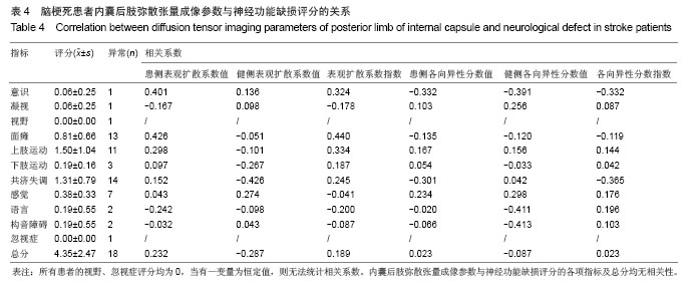
2.5 患者弥散张量成像参数与运动功能的相关性分析 脑梗死患者内囊后肢弥散张量成像参数与神经功能损伤 (NIHSS)无相关性(表4)。脑梗死患侧内囊后肢的表观扩散系数值和表观扩散系数指数与下肢Fugl-Meyer评分的总分负相关(分别为r=-0.457,P=0.049和r=-0.464,P=0.045,表5,图2A,B),而与改良Ashworth评分、Brunel平衡、步行速度、上肢Fugl-Meyer评分无相关性(P > 0.05)。患侧内囊后肢的表观扩散系数值和表观扩散系数指数与下肢Fugl-Meyer评分中的下肢运动功能部分负相关(分别为r=-0.504,P=0.028和r=-0.492,P=0.033,表5,图2C,D),与下肢Fugl-Meyer评分的下肢协调能力与速度、下肢腱反射无相关性。健侧表观扩散系数值、健侧各向异性分数值、患侧各向异性分数值和各向异性分数指数与运动功能的各项参数均无相关性(P > 0.05)。"
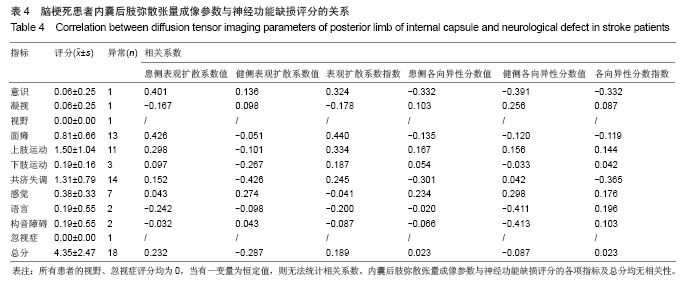
| null |
| [1] | Chen Ziyang, Pu Rui, Deng Shuang, Yuan Lingyan. Regulatory effect of exosomes on exercise-mediated insulin resistance diseases [J]. Chinese Journal of Tissue Engineering Research, 2021, 25(25): 4089-4094. |
| [2] | Chen Yang, Huang Denggao, Gao Yuanhui, Wang Shunlan, Cao Hui, Zheng Linlin, He Haowei, Luo Siqin, Xiao Jingchuan, Zhang Yingai, Zhang Shufang. Low-intensity pulsed ultrasound promotes the proliferation and adhesion of human adipose-derived mesenchymal stem cells [J]. Chinese Journal of Tissue Engineering Research, 2021, 25(25): 3949-3955. |
| [3] | Yang Junhui, Luo Jinli, Yuan Xiaoping. Effects of human growth hormone on proliferation and osteogenic differentiation of human periodontal ligament stem cells [J]. Chinese Journal of Tissue Engineering Research, 2021, 25(25): 3956-3961. |
| [4] | Sun Jianwei, Yang Xinming, Zhang Ying. Effect of montelukast combined with bone marrow mesenchymal stem cell transplantation on spinal cord injury in rat models [J]. Chinese Journal of Tissue Engineering Research, 2021, 25(25): 3962-3969. |
| [5] | Gao Shan, Huang Dongjing, Hong Haiman, Jia Jingqiao, Meng Fei. Comparison on the curative effect of human placenta-derived mesenchymal stem cells and induced islet-like cells in gestational diabetes mellitus rats [J]. Chinese Journal of Tissue Engineering Research, 2021, 25(25): 3981-3987. |
| [6] | Hao Xiaona, Zhang Yingjie, Li Yuyun, Xu Tao. Bone marrow mesenchymal stem cells overexpressing prolyl oligopeptidase on the repair of liver fibrosis in rat models [J]. Chinese Journal of Tissue Engineering Research, 2021, 25(25): 3988-3993. |
| [7] | Liu Jianyou, Jia Zhongwei, Niu Jiawei, Cao Xinjie, Zhang Dong, Wei Jie. A new method for measuring the anteversion angle of the femoral neck by constructing the three-dimensional digital model of the femur [J]. Chinese Journal of Tissue Engineering Research, 2021, 25(24): 3779-3783. |
| [8] | Meng Lingjie, Qian Hui, Sheng Xiaolei, Lu Jianfeng, Huang Jianping, Qi Liangang, Liu Zongbao. Application of three-dimensional printing technology combined with bone cement in minimally invasive treatment of the collapsed Sanders III type of calcaneal fractures [J]. Chinese Journal of Tissue Engineering Research, 2021, 25(24): 3784-3789. |
| [9] | Qian Xuankun, Huang Hefei, Wu Chengcong, Liu Keting, Ou Hua, Zhang Jinpeng, Ren Jing, Wan Jianshan. Computer-assisted navigation combined with minimally invasive transforaminal lumbar interbody fusion for lumbar spondylolisthesis [J]. Chinese Journal of Tissue Engineering Research, 2021, 25(24): 3790-3795. |
| [10] | Hu Jing, Xiang Yang, Ye Chuan, Han Ziji. Three-dimensional printing assisted screw placement and freehand pedicle screw fixation in the treatment of thoracolumbar fractures: 1-year follow-up [J]. Chinese Journal of Tissue Engineering Research, 2021, 25(24): 3804-3809. |
| [11] | Shu Qihang, Liao Yijia, Xue Jingbo, Yan Yiguo, Wang Cheng. Three-dimensional finite element analysis of a new three-dimensional printed porous fusion cage for cervical vertebra [J]. Chinese Journal of Tissue Engineering Research, 2021, 25(24): 3810-3815. |
| [12] | Wang Yihan, Li Yang, Zhang Ling, Zhang Rui, Xu Ruida, Han Xiaofeng, Cheng Guangqi, Wang Weil. Application of three-dimensional visualization technology for digital orthopedics in the reduction and fixation of intertrochanteric fracture [J]. Chinese Journal of Tissue Engineering Research, 2021, 25(24): 3816-3820. |
| [13] | Sun Maji, Wang Qiuan, Zhang Xingchen, Guo Chong, Yuan Feng, Guo Kaijin. Development and biomechanical analysis of a new anterior cervical pedicle screw fixation system [J]. Chinese Journal of Tissue Engineering Research, 2021, 25(24): 3821-3825. |
| [14] | Lin Wang, Wang Yingying, Guo Weizhong, Yuan Cuihua, Xu Shenggui, Zhang Shenshen, Lin Chengshou. Adopting expanded lateral approach to enhance the mechanical stability and knee function for treating posterolateral column fracture of tibial plateau [J]. Chinese Journal of Tissue Engineering Research, 2021, 25(24): 3826-3827. |
| [15] | Zhu Yun, Chen Yu, Qiu Hao, Liu Dun, Jin Guorong, Chen Shimou, Weng Zheng. Finite element analysis for treatment of osteoporotic femoral fracture with far cortical locking screw [J]. Chinese Journal of Tissue Engineering Research, 2021, 25(24): 3832-3837. |
| Viewed | ||||||
|
Full text |
|
|||||
|
Abstract |
|
|||||
